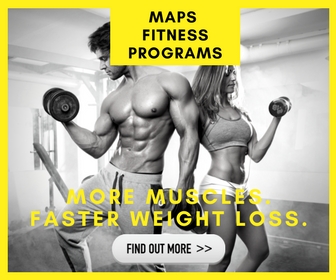
How to Practice Mindfulness
Sep 6, 2018 mindpumpNo longer reserved for meditators and the like, mindfulness is officially mainstream. Despite its recent surge in popularity, there are two common misconceptions about mindfulness. First, many assume that it is a relatively new phenomenon or a trend. This could not be farther from the truth;mindfulness is rooted in the Buddhist tradition and has existed for thousands of years. Secondly, an undoubtedly beneficial quality of mindfulness is its ability to positively impact almost every aspect of our lives, including our relationships, eating, the workplace and more. Yet at the same time, the many scenarios that benefit from mindfulness can make the practice feel complex and hard to learn. At its core, however, mindfulness is quite simple.
What is Mindfulness, Exactly?
Despite its (very) long history, mindfulness’ place among our secular, everyday lives in the United States can be credited to Jon Kabat-Zinn. Kabat-Zinn introduced mindfulness to the US in 1979 as a professor at the University of Massachusetts Medical School [1]; he drew upon his college education in and passion for Buddhist teachings and incorporated it into medicine. More specifically, Kabat-Zinn attributed mindfulness to stress reduction and relaxation, creating the now-famous Mindfulness Based Stress Reduction (MBSR) program and technique.
Kabat-Zinn defines mindfulness as “the awareness that arises through intentionally attending to one’s moment-to-moment experience in a nonjudgmental and accepting way” [2]. In other words, mindfulness asks us to notice and focus on the present moment and, while doing so, practice self-compassion and acceptance towards whatever arises.
Benefits of Mindfulness
The numerous benefits of mindfulness are too long to list here, but here are my personal top three:
1. You can take control of your emotions (rather than let them control you!). In any given situation, we often react rather than respond. Reacting is instantaneous – something happens, our emotions take over and we immediately act on them. This sounds like three distinct steps, but in real life they happen within seconds. When we practice mindfulness, however, we allow ourselves to pause. We notice the present moment, which emotions and thoughts arise with curiosity and do our best to observe rather than judge the situation at hand. It’s only after we’ve taken these first two steps that we take action and respond.
2. You’re more present. We live in a hyper-connected and fast-paced digital age, filled with a myriad of distractions fighting for our attention. Multi-tasking has become the norm, and many people pride themselves on how busy they are. There is always something to be reading, watching or doing. Our attention spans are shorter and it’s getting harder and harder to simply “be” (rather than do). As a result, we’re rarely in the present or able to notice the little things. Little things can range from the good, happy moments to the bad, upsetting ones that impact our moods, beliefs and inner dialogue. As Jon Kabat-Zinn says, “The little things? The little moments? They aren’t little.” Mindfulness helps you experience life to the fullest.
3. You’re better equipped to practice self-care. Mindfulness allows you to slow down and check in with what you’re feeling, thinking and how you’re doing. It makes you an aware, active participant in your life. Awareness is the necessary first step to practicing self-care; if you don’t know what you’re feeling or going through, then how can you find the appropriate solution? Mindfulness provides you with the necessary information to make an educated, knowledgeable decision to get what you need and to feel your best.
How to Practice Mindfulness
As I mentioned above, the many recommended ways to practice mindfulness can understandably cause overwhelm. If you’re looking for a place to get started or simply want to get back to basics, then these three exercises will do the trick:
1. Mindful Breathing. Breathing is necessary to our survival, occurring at all times (hopefully!) and is something that all human beings and animals have in common – yet we rarely take the time to notice it. Moreover, our breathing pattern is typically linked to our level of stress or unease; we breathe more evenly, deeply and slowly when calm versus more irregularly, shallowly and rapidly when distressed. When we intentionally focus on the breath we can ground ourselves in the present moment.
Either with your eyes closed or a soft gaze, place your hand on your stomach. As you inhale feel your belly expand, and as you exhale feel your belly deflate. Once you have the hang of it, try to notice the sound of your breath and the feeling of your breath coming in and out of your nose. Repeat 5-10 times as needed.
2. Body Scan. A body scan is a very simple way to observe and connect to the sensations in your body. Usually our response to bodily pain or discomfort is to distract ourselves from it or numb the pain; yet this exercise helps you to accept and notice – with a gentle curiosity – your body in both its comfort and discomfort.
Either sitting or lying down, completely relax your body. Beginning with your feet, start to slowly scan through each body part making your way up from your toes to the top of your head. Pause where necessary (and perhaps more often than you think you should). Notice what arises when you give yourself time to be fully present with these physical sensations. Don’t judge these sensations as good or bad or try to change them; just try to be aware of them.
3. Mindful Eating. Mindful eating is the remedy for all of those times you’ve eaten in front of the television, while reading a magazine or looking at your cell phone and suddenly looked down at your plate to realize you’re done with your food… and still hungry. When you eat mindfully, you tend to eat more slowly, notice more of your meal’s flavor profiles, stop eating when you’re full and gain more satisfaction from the food on your plate. Mindful eating is the practice of being present with your food.
All you need for a fun introduction to mindful eating is a small piece of chocolate, a raisin or an almond and your five senses. Complete the following steps:
1.Touch – What does it feel like (if your chocolate is wrapped, keep it wrapped to start!)?
2.Hearing – What sounds do you hear when you roll the item around, unwrap it, etc.
3.Sight – What does it look like? Make sure to look at it from every angle.
4.Smell – What does it smell like? Is it sweet, sour, pungent?
5.Taste – The grand finale! Place your food of choice in your mouth. Before you chew and swallow however, let it roll around in your mouth. What does it taste like? Then, slowly begin to chew and chew completely (your food should be liquid by the time you’re done chewing!). Then, finally, swallow. What different tastes did you notice? How did this experience differ from eating quickly?
I am more present and grounded since I began my own mindfulness practice. I am able to show up and experience my life to the fullest rather than get caught up in the busyness of my daily life or my to-do list. I have seen firsthand that mindfulness works, but I’ll be honest: I find myself no practicing mindfulness just as often as I do. I share this as a reminder that the key word here is practice. No one is perfect; mindfulness is something we can always return to and work on. It doesn’t matter if you find yourself out of your mindfulness practice. All that matters is that you gently guide yourself back to it with compassion.
If you have any questions or want to share your own mindfulness story, I’d love to hear it! Feel free to reach outhere
[1]https://psychcentral.com/lib/a-brief-history-of-mindfulness-in-the-usa-and-its-impact-on-our-lives/
[2]https://doi.org/10.1093/clipsy.bpg016







